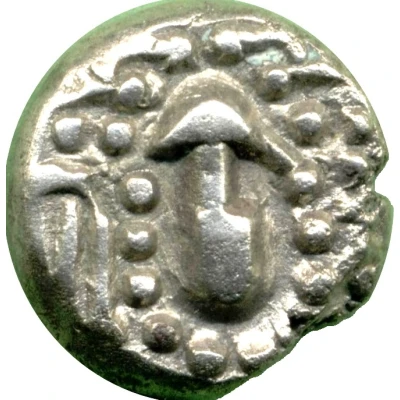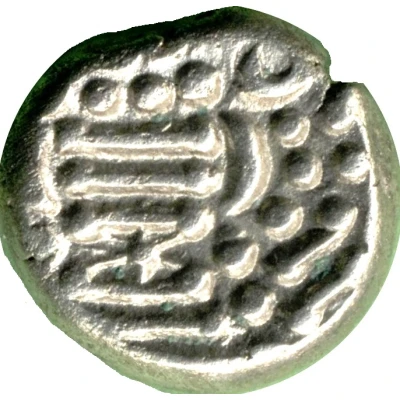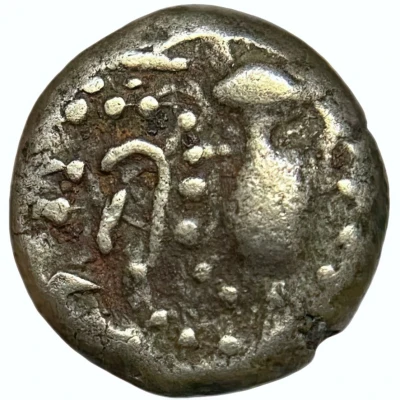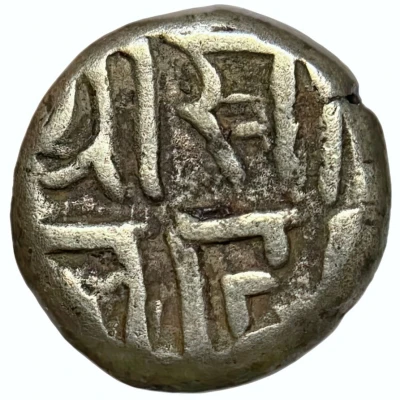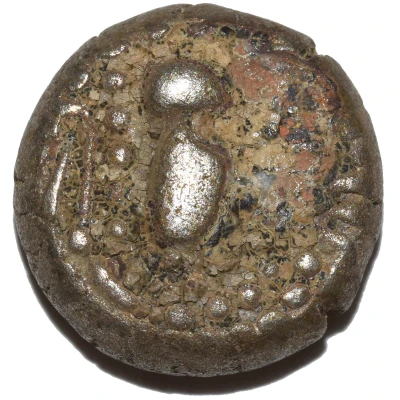
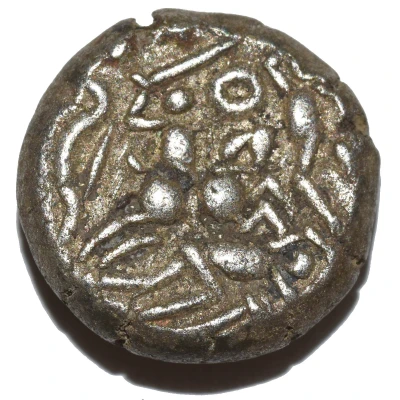

© Cuthwellis
Gadhaiya Paisa Silaharas of Konkan ND
| Billon | 4.24 g | 14 mm |
| Issuer | Gadhaiya (Indian Northern Dynasties) |
|---|---|
| Type | Standard circulation coin |
| Years | 1100-1200 |
| Value | 1 Drachm |
| Currency | Drachm (543-1390) |
| Composition | Billon |
| Weight | 4.24 g |
| Diameter | 14 mm |
| Thickness | 3 mm |
| Shape | Round (irregular) |
| Orientation | Variable alignment ↺ |
| Demonetized | Yes |
| Updated | 2024-10-05 |
| Numista | N#235167 |
|---|---|
| Rarity index | 90% |
Reverse
Battle scene showing horseman trampling one victim underfoot with the victim's sword lying below him; the horseman brandishes his sword at another victim to right.
Edge
Plain
Comment
The reverse image is different from the usual Gadhaiya coinage, which depicts a fire altar and its attendants. It is attributed to the Silaharas of the Konkan, but Maheshwari assigns it to the Paramaras and suggests it was issued to celebrate their recovery of Malwa in c. 1190. Specimens showing all 3 combatants on the reverse are rare. Further reference: Deyell 167.Interesting fact
One interesting fact about the Gadhaiya Paisa coin is that it was used as a form of currency during the Silaharas of Konkan dynasty, which ruled over a region in western India, particularly in the state of Maharashtra, during the 11th to 12th centuries. Despite being made of billon, a copper-silver alloy, the coin was still considered valuable and widely used for trade and commerce during its time.
Price
| Date | Mintage | VG | F | VF | XF | AU | UNC |
|---|---|---|---|---|---|---|---|
| ND (1100-1200) | - | - | - | - | - | - |
Values in the table are based on evaluations by sales realized on Internet platforms. They serve as an indication only for Gadhaiya Paisa (Silaharas of Konkan) ND (1100-1200) coin.
